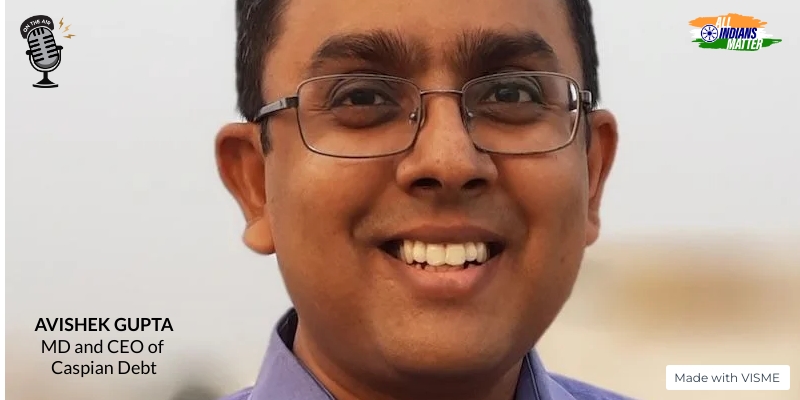Ashraf Engineer
May 25, 2024
EPISODE TRANSCRIPT
Hello and welcome to All Indians Matter. I am Ashraf Engineer.
The World Economic Forum Global Gender Gap Report 2023 ranked India 127 out of 146 countries in terms of gender parity. This, believe it or not, is an improvement of 1.4% and eight positions over the previous year. In comparison, Bangladesh was ranked 59, while China was at 107, Nepal at 116, Sri Lanka at 115 and Bhutan at 103. What’s saddening is that, since the first edition of the report in 2006, parity has advanced only 4.1%. At this rate, closing the overall gender gap in India will require 131 years. The gender disparity calculation takes into account many factors, from educational attainment to participation in the economy as well as political empowerment. Also playing a very important role is the gender pay gap.
SIGNATURE TUNE
So, what exactly is the gender pay gap? In essence, it is the average difference between the pay received by working men and women but it’s not as simple as that overall. It is more nuanced than most people believe. There are two different factors to take into account: the unadjusted pay gap and the adjusted pay gap. The former simply differentiates between the average wages of the two genders. The latter, however, takes into account differences in factors such as occupation, education and job experience. If you consider the unadjusted pay gap, the difference is far greater.
For example, in the US, the adjusted pay gap is 80% to 98% – that is, women receive only 80% to 98% of the salary men receive for the same work. However, the unadjusted figure is a much lower 78%. The variance is due to the difference in the number of men and women who work and also due to how many years they work and the number of breaks taken for reasons such as the birth of a child.
In India, the situation is even more complicated due to socioeconomic and structural reasons. The girl child is often not educated or made to drop out after a few years in school. Those who are educated are often not allowed to work. Those who do work often take extended maternity leaves or to care for other family members. These factors, and more, lead to women falling behind men when it comes to salaries.
According to the Monster Salary Index, published in March 2019, women in India earn 19% less than the men. The median gross hourly salary for men in 2018 was ₹242.49 and ₹196.3 for women.
This was true across industries. IT services, for instance, showed a pay gap of 26%, while in manufacturing men earned 24% more than women.
It’s worse across the unorganised sector, where women are routinely paid way less than men. Till the social stigma against women working and the widespread social injustice against women is not done away with, the gender pay gap won’t close.
While many would laud India’s climb on the Gender Gap Report, there isn’t a lot to cheer about. India needs significant improvement on all key markers: economic participation, educational attainment, health and political empowerment. One half of the population lags behind on all parameters, not contributing to the economy or society as a whole. When it comes to political empowerment, women have representation of over 40% in local governance, thanks to reservations. However, they don’t exist at the highest level – only 15.1% of parliamentarians are women. The Women’s Reservation Bill, which seeks to reserve 33% of seats in the Lok Sabha and State Assemblies for women, is now pending for almost three decades.
As far as economic opportunity is concerned, India ranks near the bottom with less than 40% parity. There are rises in wage parity and income, but shares of women in senior positions and technical roles have fallen. Girls must have access to education at all levels but they also need paid work. Allowing them access to job-focused education could be a way of rising up on all indices, including health and survival. It’s precisely because this did not exist that black swan events like the COVID-19 pandemic were supremely harder on women. Other than the high mortality, their labour participation plummeted, reducing not just household incomes but also many of the social gains achieved over the decades.
But let’s return to the glass ceiling.
The World Economic Forum report seems to indicate a slipping trend globally but it is felt more acutely in countries like India where the situation was already dismal.
The report cites LinkedIn data from 163 countries to show that women account for 41.9% of the workforce in 2023, but their share in senior leadership positions is only 32.2%. This number was rising by 1% per year globally for the past eight years, but the trend regressed in 2023 to 2021 levels.
The report also underlines a persistent digital divide as one of the causes of inequality of opportunity. Enrollment in technical skills such as artificial intelligence and big data is significantly higher for men. Happily, when women do enroll, they usually attain proficiency faster than men.
Gender disparity is a multi-faceted challenge but, broadly, there has to be a greater push for economic participation as well as achieving gender parity in leadership, in both business and government. There can be no doubt that the economic breakthrough India needs requires creativity as well as varied ideas and skills. It’s not going to be achieved by keeping out half the population.
Thank you all for listening. Please visit allindiansmatter.in for more columns and audio podcasts. You can follow me on Twitter at @AshrafEngineer and @AllIndiansCount. Search for the All Indians Matter page on Facebook. On Instagram, the handle is @AllIndiansMatter. Email me at editor@allindiansmatter.in. Catch you again soon.






